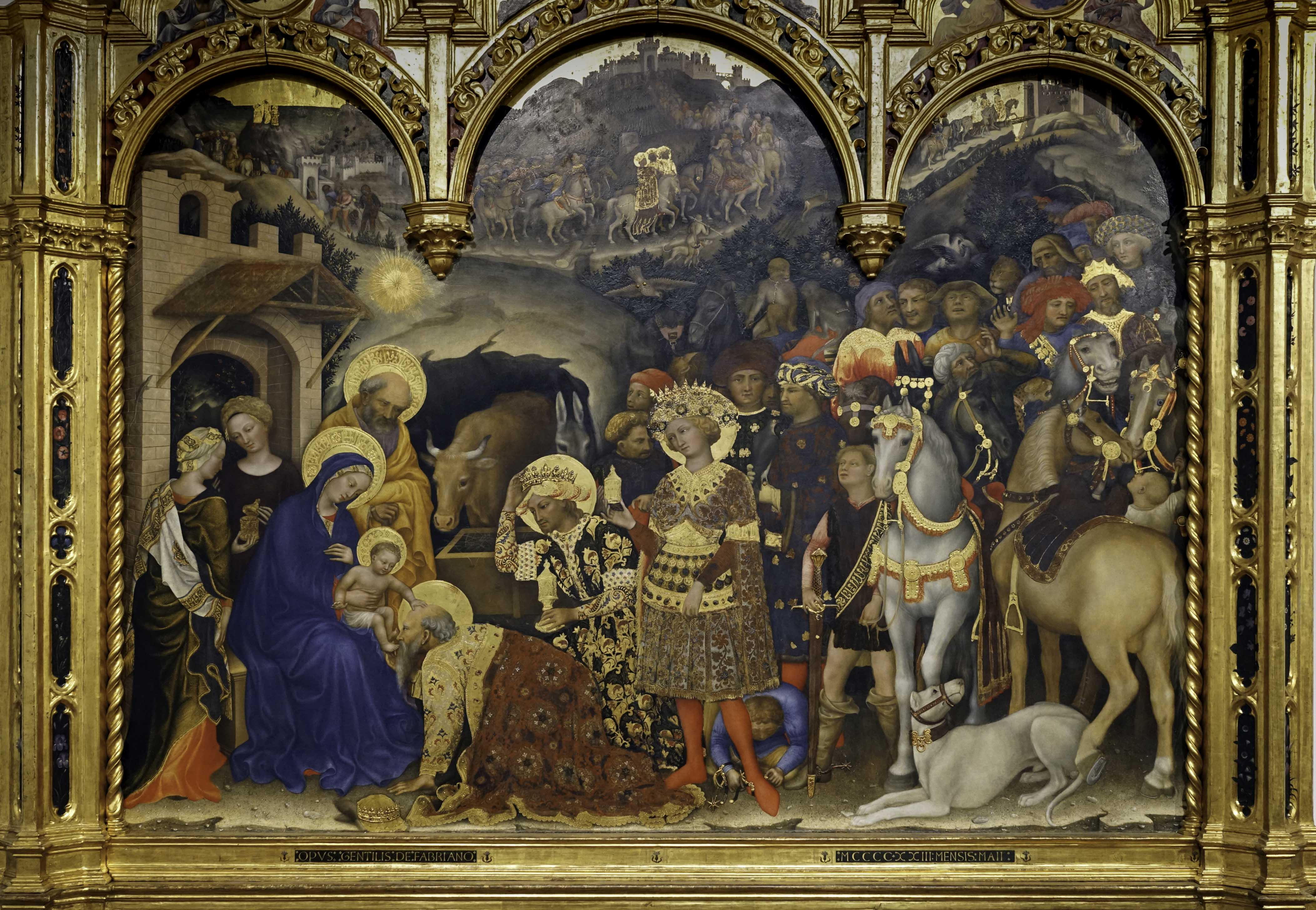We Catholics do not want to fill our minds and hearts with darkness, but with light: not with the darkness of ignorance and sin, which were never more dense than in our days, neither in the World nor in the Church, but with the light of Faith and Charity; not with non-being but with being; not with the false but with the true, not with evil but with good, with goodness, and with holiness. We desire to lift our hearts and turn our eyes to the Eternal Light that is about to rise for us in the arc of the Heavens, the Light that shines in the darkness: and the darkness has not overcome it.
In this Light, in this Sun, God has placed His tabernacle (Psalm 19): posuit in sole tabernaculum suum: that is in the Sun of His Divinity He has placed the tabernacle of His Humanity: the tabernacle in which He came to dwell among us on earth - habitavit in nobis - the original Greek term meaning dwelling in a tabernacle, in a tent.
The term 'tabernacle' in this psalm is also understood of the Blessed Virgin Mary: who was herself 'placed in the sun' that is in God, so that she was, in the words of Saint Bernard, 'immersed in inaccessible light.' And in this tabernacle that is Our Lady, the true earthly paradise, God, in the words of Saint Augustine 'was united to human nature as a Bridegroom to a Bride' and in the phrase of Ecclesiasticus (24.6) placed by the Church in the mouth of Our Lady: 'I have made it that in the Heavens there should arise an unfailing light: 'Ego feci in caelis, ut oriretur lumen indeficiens.'
As for the issuing forth from the Immaculate womb of the Madonna, the Church sings the following words in the Advent responsory: egressus eius sicut a principio dierum aeternitatis: His issuing forth is as from the principle of the days of eternity, where the generation from Our Blessed Lady is compared to the generation from the Divine Father. The Father is the Principle within the Most Holy Trinity, 'the Principle without Principle' from which the Divine Son proceeds outside time in the unfathomable and ineffable mystery of the inner life of God. In another place, Holy Mother Church applies to the Nativity a similar phrase from the Song of Songs (4.16): 'Emissiones tuae paradisus': your emissions - that which you generate - is Paradise.
*
Let us proceed to consider further uses of the image of light, in the patristic and liturgical traditions, of the mystery of the Virginal Conception and of the Parturition of the Madonna.
As for the patristic tradition, St. Bernard writes: 'Just as the splendour of the sun fills and penetrates a glass window without breaking it, and pierces its solid form with imperceptible subtlety, neither harming it when entering, nor breaking it when leaving: thus the Word of God, Splendour of the Father, entered the Virginal Chamber and issued forth from the Closed Womb. '
As for the liturgical tradition, the Preface of the Holy Mass of the Madonna uses the image of light to represent the Nativity of Him Who is both Son of God and Son of the Immaculate Virgin: '... virginitatis gloria permanente, lumen aeternum mundo effudit, Jesum Christum, Dominum nostrum': while the glory of virginity remained, she shed forth the Eternal Light upon the world: Jesus Christ, Our Lord. '
Similarly, but in a more developed manner, the Preface of Christmas declares: 'Quia per incarnati Verbi mysterium, nova mentis nostrae oculis lux tuae claritatis effulsit: ut dum visibiliter Deum cognoscimus, per hunc in invisibilium amorem rapiamur.' ' …by the Mystery of the Incarnate Word a new light of Thy glory shone forth to the eyes of our mind: so that while we know God visibly, through Him we are raised up to the love of invisible things'. In other words, beholding God in His Humanity in the form of Our Lord Jesus Christ, we are rapt to the love of Him in His Divinity. This passage from the Humanity to the Divinity of Our Blessed Lord, which must be our most fervent desire in mental prayer, is expressed in the word of the Lord Ego sum Janua, I am the door, in which He invites us to pass through His Most Sacred Humanity, as through a gate, to enter into His Divinity.
This same Preface was recited, up to the time of the liturgical innovations, also on the feast of Corpus Christi (amongst others) to express the same passage from the visible to the invisible. It should also be noted that the Sacred Council of Trent uses similar language to speak of features of the Holy Mass as that of the silence of the Roman Canon: 'with which the minds of the faithful are attracted by these visible signs of religion and piety, to the contemplation of the most high things hidden in the sacrifice.'
When the Preface says 'a new light of Thy glory', it speaks of the manifestation of the Divinity in human form at Christmas. Previously, the light of God had shone on the world in other ways: in the Faith of the Chosen People and in the graces bestowed upon them; but, with the Birth of the Infant Child Jesus, a new light has shone on the world, 2,000 years ago in Bethlehem and again to-day in a spiritual sense: the light par excellence, the very Uncreated Light of God.
Laudetur Jesus Christus in Aeternum. Amen.
O MAGNUM MYSTERIUM
